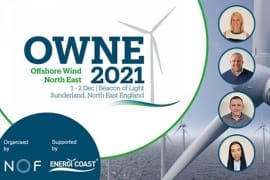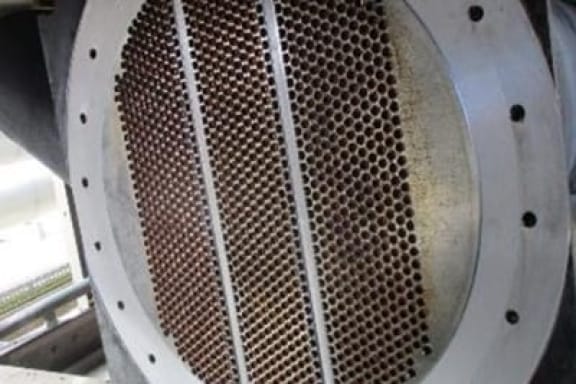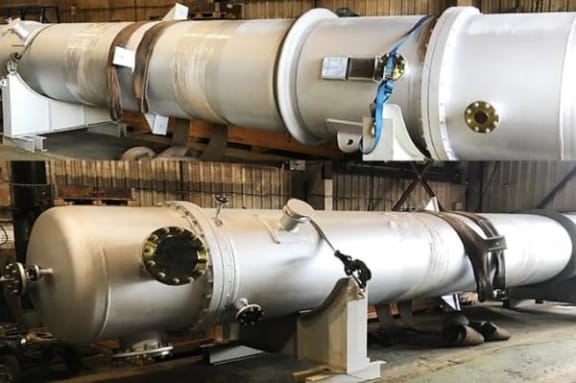Caron Rose
The Centre For Climate And Energy Solutions maintain that developing our carbon capture, utilisation and storage (CCUS) capabilities may be the only practical way to achieve decarbonisation in the industrial sector, and we’re inclined to agree.
CCUS technology has the potential to capture up to 90% of the carbon produced by industrial facilities, power plants, refineries and oil rigs. But efforts to cement the UK’s place as a global leader in the CCUS sector have been slow to get off the ground. This is partly because planning, designing and piloting carbon capture and storage is time consuming.
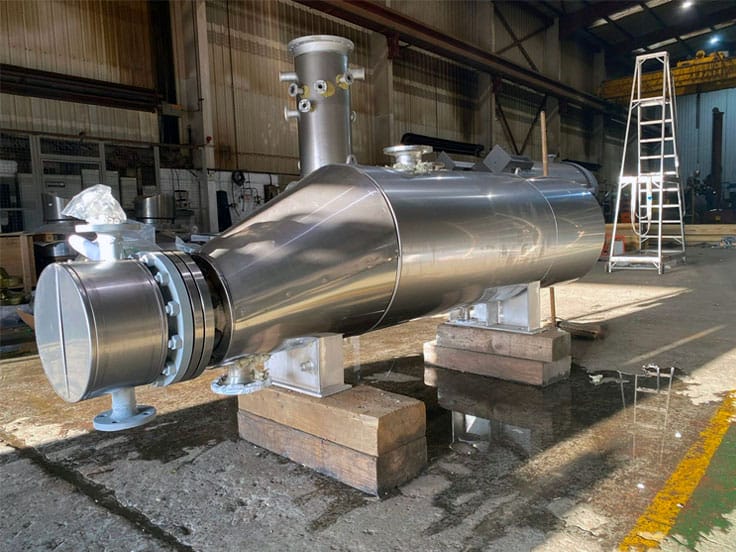
Built to Meet the Needs of Pioneering CCUS Projects
But it is also because the cost of developing, manufacturing and installing the necessary infrastructure can be prohibitively expensive. Glacier Energy aims to help tackle this problem by designing affordable heat exchangers and pressure vessels that are purpose-built to meet the needs of pioneering CCUS programmes around the globe.
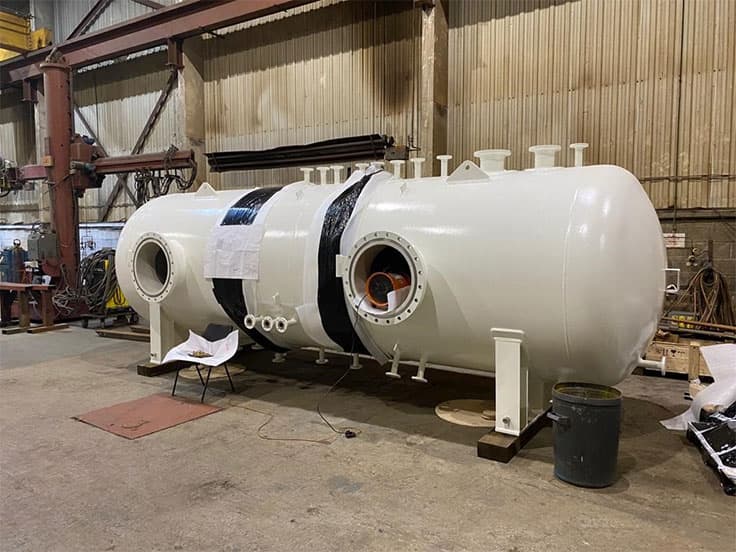
Benefiting from over 120 years of hands-on pressure vessel, heat exchanger and structural fabrication manufacturing experience, we’re one of the few UK engineering companies capable of manufacturing the reliable, efficient and well-optimised equipment needed to make your CCUS project commercially viable.
At present, we’re working with track one clusters, HyNet North West and the East Coast as well as the reserve Acorn Cluster to develop economical ways of capturing and storing carbon from industrial facilities and power stations.
The global energy landscape is undergoing a profound shift. Government initiatives like the 10 Point Plan For A Green Industrial Revolution and the UK Hydrogen Strategy are driving a structural transformation, and innovators around the globe are racing to supply groundbreaking solutions capable of satisfying the growing demand for clean energy.
According to the International Energy Agency (IEA) renewables and sustainable technologies will account for approximately 95% of the growth in global power-generation through 2026, and an increasingly large share of the world’s total investment in energy is going to projects designed to capture and store carbon, generate green hydrogen or harness wind power.
But even the most innovative clean energy solutions will require significant infrastructure and technologies that depend on equipment familiar to anyone working in the oil and gas industry.
Groups like the new HyNet North West project, the Acorn project and the East Coast Cluster are all exploring ways of using traditional pressure vessels to store and transport captured CO2, and the Northern Endurance Partnership (NEP) are also looking at ways of capturing the carbon produced by the Keadby 1 and Keadby 2 power stations using traditional heat exchangers.
Clients
Facilitating Change
Equipped with over 120 years of hands-on experience - and drawing on knowledge from some of the industry’s leading experts - we’re ideally placed to design and manufacture the pressure vessel, heat exchanger and structural fabrication equipment needed to support the development of sustainable energy solutions and initiatives.
Glacier Energy has moved into the Wilton Centre, the home of business and science on Teesside. The Wilton Centre is located in the heart of the North East of England Process Industry Cluster (NEPIC) and the centre is one of Europe’s largest research and development facilities.
The Wilton Centre has seen a lot of activity for renewable projects in the East Coast Cluster compromising of Northern Endurance, Net Zero Teesside and Zero Carbon Humber, all of which are planning to create a hydrogen economy and CCUS capabilities. This area is also becoming a global cluster which leads the way in green net zero technologies and the circular economy. Glacier Energy is therefore delighted to move in and be able to support local companies and continue to be a proactive participant in the energy transition.
Glacier Energy has domain knowledge, in-house capabilities and a track record in the delivery of innovative solutions for their customers. Glacier Energy offers a wide range of heat exchangers and pressure vessels for the Hydrogen, CCUS, Circular Economy, Waste to Energy and Energy Storage Industries. Additionally, Glacier Energy has been supporting the wind industry providing services to large scale wind projects across Europe for more than 20 years. As a result, the Wilton Centre is a perfect location for Glacier Energy to open its fifth office.
 Key Account Manager, Matthew Brooks and Technical Sales Manager, David Dakers moved into Glacier Energy’s new office and are excited to catch up with some existing clients and make some new connections within the Wilton Centre.
Key Account Manager, Matthew Brooks and Technical Sales Manager, David Dakers moved into Glacier Energy’s new office and are excited to catch up with some existing clients and make some new connections within the Wilton Centre.
Glacier Energy is delighted to be a part of the green industrial revolution taking place on Teesside.
To find out more information about how Glacier Energy can help you or to arrange a meeting with our team within the Wilton Centre, please contact This email address is being protected from spambots. You need JavaScript enabled to view it. or This email address is being protected from spambots. You need JavaScript enabled to view it.
Glacier Energy has made exciting new developments and expanded their service offerings to include Rope Access solutions to support the wind industry, both on and offshore. This service includes conventional and advanced NDT, blade inspection and lightening protection system surveys. This is in addition to the existing rope access services offered, which includes working at height consultancy, supervision and rescue cover.
By Glacier Energy offering conventional NDT and advanced NDT with Rope Access this can assist in meeting additional requirements for clients. This could involve in-service inspection of structural welds of wind turbines, UT inspection of anchor bolts and connector bolts, inspection of nacelle frames, inspection of gear box and generator securing frame and inspection of hub connectors.
Blade inspection has also been a recent development for Glacier Energy. This consists of offering phased array ultrasonic testing of composite material, internal and external close visual inspection (CVI), lightening protection system survey and blade repair.
Following these advancements, the team was recently awarded a contract with a new client. The scope of work was similar in both locations and involved blade inspection through completing Internal and external close visual inspection of the WTG blades and lightening protection system survey.
Commenting on Glacier Energy’s recent developments, John Macdonald, Rope Access Manager / Technical Authority said “The addition of Rope Access allows us to support our clients in a more cost-effective way whilst maintaining very high safety standards. The additional service offerings complement our core business, and it is great to be supporting the wind industry in the journey to net zero.”
These developments have been a great step forward for Glacier Energy and it is an exciting time for the company.
Want to talk about a rope access project? Contact us.
For over 40 years, Glacier Energy’s inspection services division has provided clients with market-leading conventional and advanced non-destructive testing and inspection services for new-build fabrication and assembly and repair & maintenance projects across the renewables, oil & gas, petrochemicals and power generation industries. The broad range of inspection services offered can help clients reduce risk and ensure quality & accuracy in-line with all regulatory requirements.
Quality is at the forefront of the inspection services division. The team has been working hard to uphold the highest industry standards and are committed to ensuring that these are continually met and adhered to. The team has been approved by the Lloyds register for accreditations ISO 14001:2015, ISO 45001:2018, ISO 9001:2015. In addition to this, Glacier Energy’s inspection services division has satisfied all the requirements to become fully registered on the JOSCAR supplier accreditation register, achieved safe contractor accreditation, NDT on classification projects in accordance with class programme DNVGL-CP-0484 and a certificate of assurance complies with the requirements of the cyber essentials scheme. The work of the inspection services division demonstrates that they are working to best practice whilst displaying their abilities to our clients and stakeholders.
Glacier Energy are regularly looking to upskill their existing workforce. Debbie Lee, Operations Advisor within the inspection services division is currently completing her ISO17020 audit course and making a fantastic contribution to the team’s success. Debbie's transferable skills allow her to undertake this course and means she will become an internal auditor. This supports Glacier Energy as an independent and impartial auditor for ISO9001, 14001 and 45001 thus ensuring continued certification for the business units and the group, forming part of the Glacier Energy audit pool. This also ensures compliance with statute, regulations & standards that apply to Glacier Energy and ensures there is no conflict of interest and maintains impartiality and integrity to the ISO17020 standard.
As Glacier Energy is focused on continual improvement, additional employees having the ability to knowledgably promote the importance of ISO17020 within the organisation is important.
Therefore, in the coming months, additional members of the inspection team will also be requalifying and undertaking internal audit training.
David Jensen, QHSE Manager commented on the recent achievements and said “Our achievements have highlighted the importance of UCAS and has showed the competency of our existing workforce. It has also reinforced the need for our existing workforce to upskill and our focus now is our contribution to maintain accreditation ISO17020 and continue to adhere to the highest safety standards”.
Find out more about Glacier Energy’s inspection services division.
Glacier Energy was delighted to exhibit at Offshore Wind North East 2021.
Offshore Wind North East is a leading event which explores themes and opportunities in the offshore wind sector. The event hosted over 800+ attendees and 130+ exhibitors with a variety of speakers providing updates on their business activities and plans going forward. This included speakers from organisations such as The Crown Estate, BP and Smulders. Furthermore, the developers of the Dogger Bank Wind Farm, SSE Renewables and Equinor and the RWE Sofia Offshore Wind Farm were also present.
 Glacier Energy was thrilled to exhibit, see some familiar faces, and build up new connections across the offshore wind supply chain. Glacier Energy’s focus was displaying our Conventional and Advanced NDT services along with our new rope access capabilities.
Glacier Energy was thrilled to exhibit, see some familiar faces, and build up new connections across the offshore wind supply chain. Glacier Energy’s focus was displaying our Conventional and Advanced NDT services along with our new rope access capabilities.
Glacier Inspection Services have supported both SIF and Smulders for over 25 years supplying NDT Services on the Fabrication of Monopiles and Transition Pieces for Offshore Wind Farms. Glacier Inspection Services supply all conventional NDT methods for the inspection of on and offshore wind turbines including UT and PAUT for the inspection of blades along with full rope access capabilities and support services.
Offshore Wind North East was a great opportunity to discuss our newly launched rope access service to support NDT and inspection of wind farms both on and offshore. Having attended Offshore Wind North East 2021, Glacier Energy are now looking forward to exhibiting at upcoming events including Offshore Europe and CHEMUK in 2022. We hope to see you there!
Learn more about Glacier Energy’s NDT and Inspection capabilities here.
We’re also equipped to design bespoke heat transfer solutions for companies with exacting requirements that can’t be met by conventional or “off the shelf” heat transfer technologies, including units designed to cope with corrosion, extreme pressures and/or cyclic thermal stress.
We’ve designed complex heat transfer systems for blue chip companies across the Caspian region, Europe and the rest of the world – including chemical manufacturers, energy companies and oil majors who frequently need bespoke equipment capable of operating in extremely confined or restricted, sour and inhospitable environments.
We also design and manufacture heat transfer equipment for renewable and alternative energy companies.
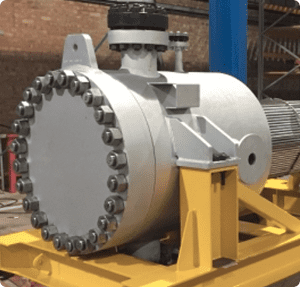
Clients
Heat exchangers are integral to many industrial processes, with their primary purpose being to conserve energy by passing heat from one process stream to another. During operation, heat exchangers undergo the process of fouling, whereby solid materials are deposited on the heat exchanger surfaces. The build-up of this material affects the performance of the heat exchanger, acting as a barrier to heat transfer and causing it to operate less efficiently than it was originally designed for. Over time, this leads to increased operating and maintenance costs and can even cause expensive unplanned downtimes due to failure of the heat exchanger.
Fouling also presents another major issue to operators: increased carbon emissions. Any loss of heat transfer needs to be compensated for elsewhere in the process, primarily through additional heating or cooling, meaning more energy needs to be put into the system and, therefore, more CO2 is emitted. The power to pin-point and quantify any loss of efficiency of a process is quickly becoming a “must-have” capability as the energy industry continues its drive towards a Net Zero future.
HTX Digital
As heat exchanger experts, we at Glacier Energy believe there is a smarter way to monitor and manage the operation of heat exchangers. This is why we have developed HTX Digital - a digital non-intrusive monitoring tool that utilises existing data combined with predictive algorithms to trend and predict the future performance and degradation of heat exchangers.
HTX Digital consists of several calculation strategies, with each of these measuring or monitoring a different mode of degradation or failure mechanism of the heat exchanger. The calculations are implemented onto the HTX Digital platform, along with design information on the physical dimensions of the heat exchanger. The tool is then able to carry out calculations on large amounts of operational data, both historic and live, to monitor trends and measure the increasing level of fouling over time. By quantifying the resulting loss in energy efficiency, HTX Digital can help you reduce your operating costs and carbon footprint by promoting smarter decision-making and effective maintenance scheduling.
In addition, HTX Digital uses this method to detect probable instances of heat exchanger failure mechanisms that are not possible to measure directly, such as tube vibration, exceeding velocity limits, and thermal cycling.
Data Filtering
A colossal amount of data is being collected nowadays, but not all of it is useful. A major speedbump in the road to digitalisation is the lack of availability of reliable data, without which we cannot begin to tackle the issue of energy efficiency.
A first step in being able to obtain useful insights is to apply targeted filters to clean up the data. As well as more general filters, such as removing points where data is in the wrong format, HTX Digital applies specifically designed filters that target heat exchanger operating parameters. This includes instances of low-flow or similar entering temperature differences, which would negatively affect the accuracy of the results of the calculations that measure energy efficiency. This is an important step in making sure the digital tool provides accurate monitoring of the change of efficiency of the heat exchanger over time.
Tracking the Loss of Energy Efficiency Caused by Fouling
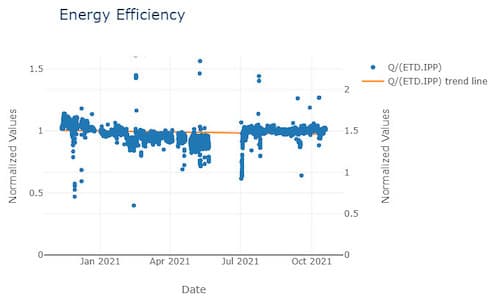
With industry continuing to move from reactive to proactive maintenance of assets, the ability to trend and predict optimum maintenance windows is becoming essential. For heat exchangers it is possible to track the loss in efficiency caused by fouling and combine this data with predictive algorithms that will indicate the most economically optimal time to perform cleaning of the heat exchanger to remove the fouling deposits.
The build-up of a foulant layer on the walls of the heat exchanger adversely affects the efficiency of the heat exchanger. There are two ways in which is does this: 1) adding resistance to heat transfer across the heat exchanger walls, and 2) narrowing the free-flow area of the heat exchanger, meaning more power is required to pump fluids through.
HTX Digital combines these two variables into a single parameter, which allows the user to gain insight into the changing efficiency of the heat exchanger by plotting, versus time, a parameter analogous to the quantity of heat transferred per unit of pumping power required to operate the heat exchanger.
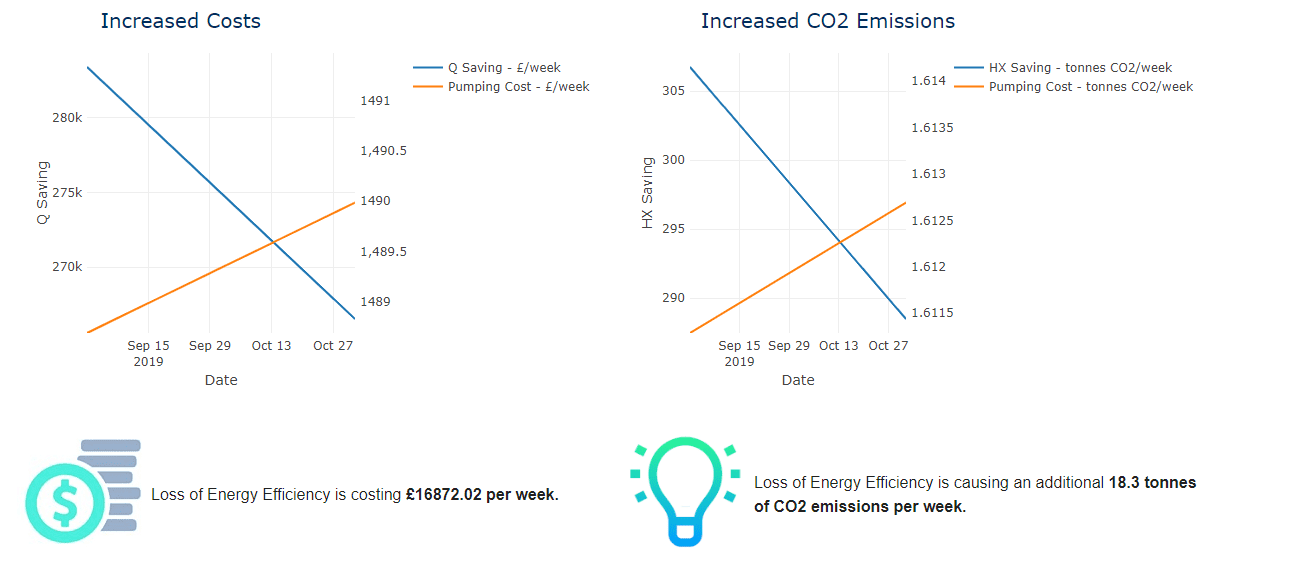
With the drop in energy efficiency quantified, HTX Digital can convert this into tangible values for the increased operation costs and emissions of carbon due to additional heating or cooling required. This is a valuable tool for assisting in the decarbonisation of your process or asset.
Predicting the Best Time for Intervention
The drop in energy efficiency of the heat exchanger over time can be used to determine the optimal time to clean. By combining the cost of cleaning of the heat exchanger with the increased operation costs, HTX Digital’s in-built predictive algorithms trend and extrapolate the increased costs over time. The resulting curve produced is essentially a trade-off between these two costs, where the minimum point can be taken as the most economically beneficial time to perform cleaning.
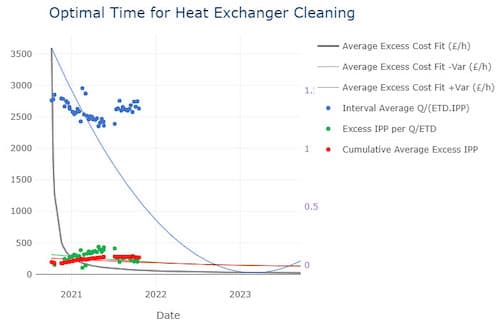
This ability to predict the optimal time for cleaning allows the heat exchanger maintenance schedule to be taken from reactive to proactive, resulting in less unplanned asset downtime and cost savings by up to 30%.
Don’t be left behind on the journey to digitalisation. Get in touch with us if you would like to receive any more information, or to request a demo of how HTX Digital can help you with your heat exchanger management.
Glacier Energy has supplied four heat exchanger units to Cheesecake Energy Ltd (CEL), the company developing the world’s greenest energy storage technology – eTanker.
eTanker lowers the cost of medium to long-duration energy storage and turns renewable energy sources like wind and solar into reliable, on-demand power. The eTanker system uses thermal and compressed air energy storage to achieve costs that are 30-40% lower than that of the cheapest batteries currently available, by repurposing long-lasting, proven industrial components from existing automotive, oil and gas equipment supply chains.
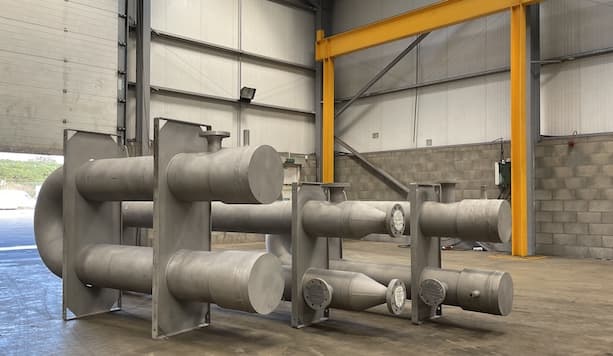
The energy storage system contains four heat exchanger units (HXUs). CEL has designed and built a prototype system and approached Glacier Energy to design and supply the heat exchangers. Glacier Energy was selected as a supplier capable of providing 100s, 1,000s and ultimately 10,000s of similar units as production of the eTanker is ramped up during 2022-2025.
Glacier Energy provided all stainless-steel heat exchangers, designed and manufactured in accordance with ASME VIII Div. I&II & PED. These heat exchangers, which sit within the eTanker containers, are bespoke hairpin-style shell and ‘U’ tube bundles, fully welded in construction, and were designed for 25-years lifespan.
Glacier Energy and CEL are currently collaborating on other projects for further innovative thermal storage technologies.
Learn more about Glacier Energy’s heat transfer solutions.












